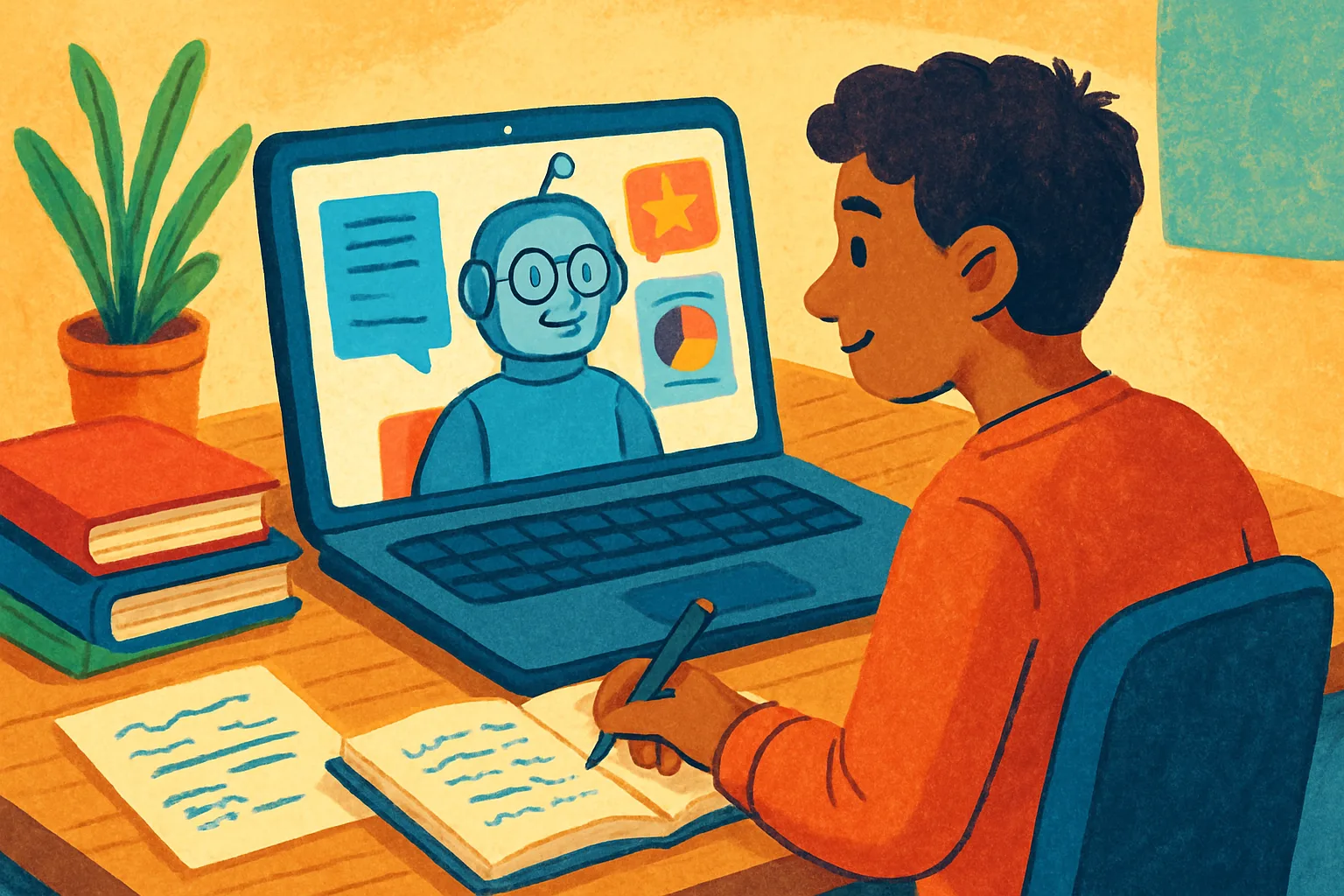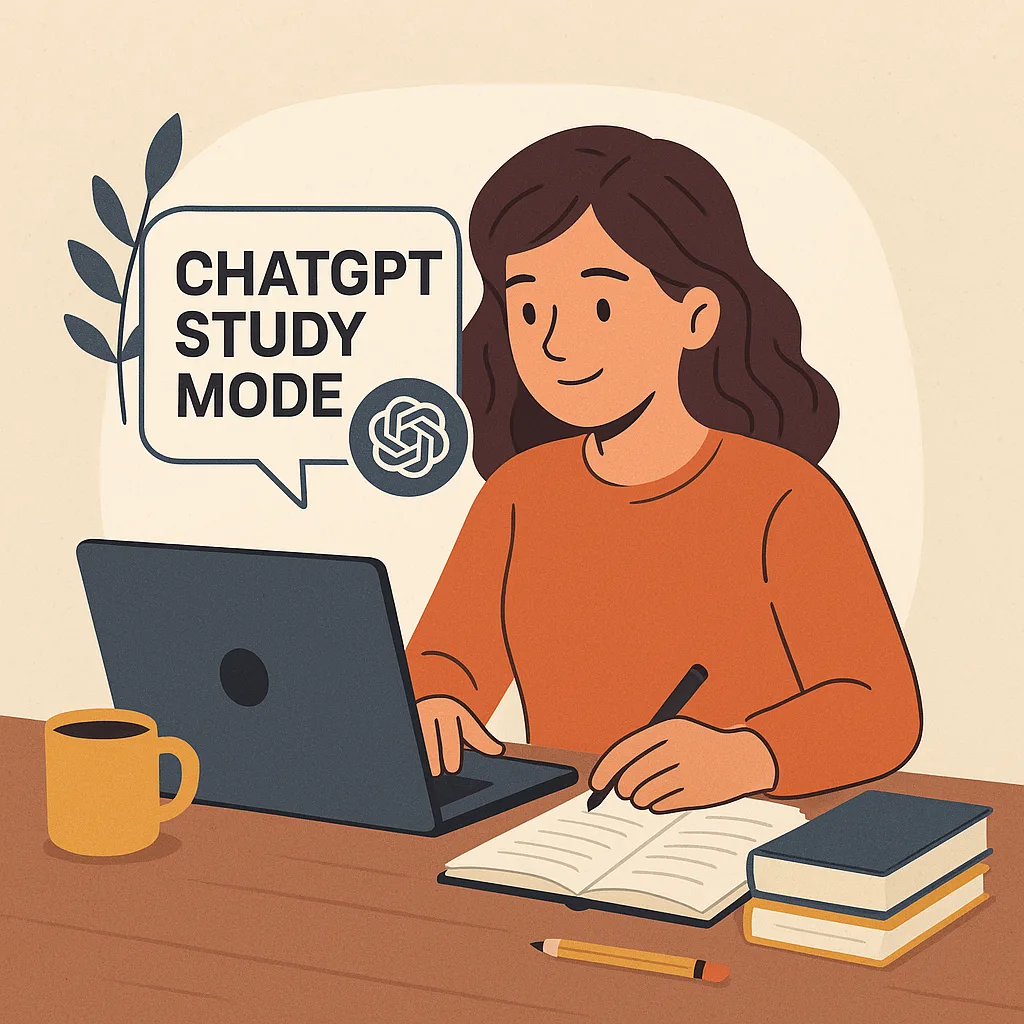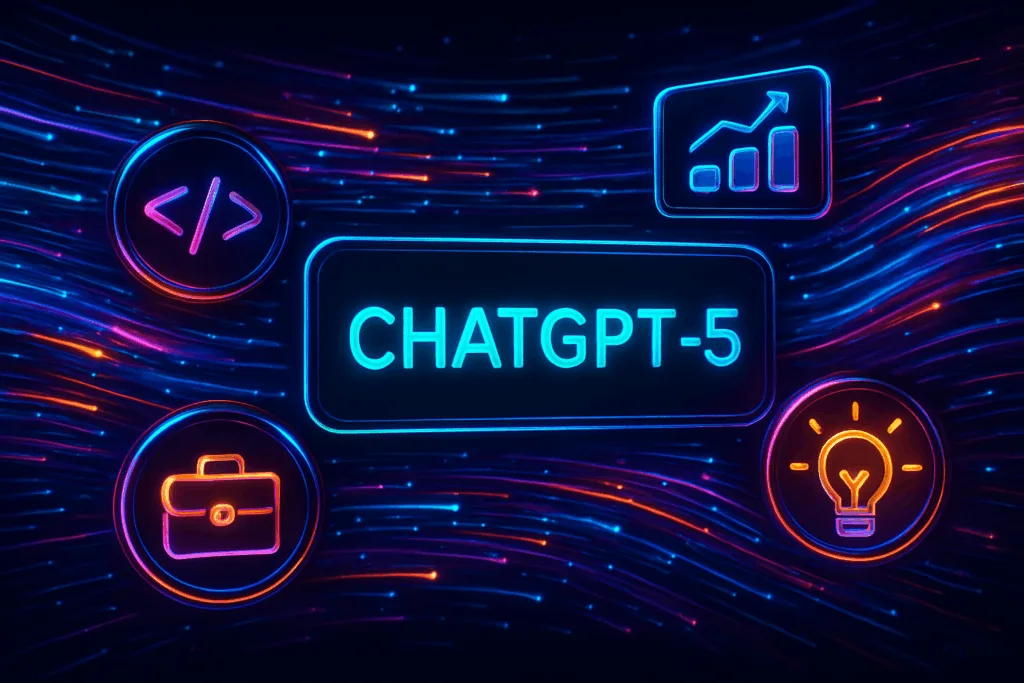Last Updated on August 9, 2025 12:16 pm by Laszlo Szabo / NowadAIs | Published on August 9, 2025 by Laszlo Szabo / NowadAIs
What Is ChatGPT Study Mode and Why It Matters – Key Notes
ChatGPT Study Mode offers step-by-step guidance and personalized support, focusing on deeper learning rather than providing instant answers.
The tool adapts sessions based on your goals, skill level, and prior study history, making sessions interactive and tailored.
Built using principles of learning science, ChatGPT Study Mode encourages critical thinking and gradually develops expertise through quizzes, open-ended feedback, and scaffolding.
What Is ChatGPT Study Mode and Why It Matters
Effortless learning has become a hot topic with the introduction of ChatGPT Study Mode. Designed to support genuine skill-building, ChatGPT Study Mode takes you beyond simple answer retrieval. Instead of just telling you what you want to know, it walks you through your homework, exam prep, and complicated concepts with interactive guidance and encouraging feedback. Whether you’re a college student wrestling with calculus, a high schooler prepping for biology, or simply curious about a new topic, this feature is meant to help you learn more deeply and thoughtfully.
What Makes ChatGPT Study Mode Different?
Most digital assistants provide instant answers, often without context or teaching. ChatGPT Study Mode is meant to change this pattern. When you activate Study Mode, ChatGPT starts a conversation by asking questions about your goals and skill level. It gets to know what you’re working on, and adapts its responses to your unique situation. You’re encouraged to reason out problems, apply your own knowledge, and receive tailored advice. The experience feels more like sitting down with a personal tutor than browsing a typical Q&A platform.
This interactive style is the result of collaboration between AI engineers, educators, and learning experts. Study Mode is built on custom instructions crafted with help from teachers and scientists, all with the aim of supporting genuine comprehension rather than surface-level completion (source: OpenAI Study Mode). Features include Socratic-style questions, scaffolding, memory-enabled personalization, and actionable feedback.
How Does ChatGPT Study Mode Work?
Turning on ChatGPT Study Mode is simple: look for the “Study and learn” option in the tools menu when using ChatGPT. As soon as it’s on, the platform starts asking you about your assignment, your grade level, your experience with the topic, and any immediate goals, like a test date or tricky concept. Instead of dumping all the information at once, ChatGPT Study Mode guides you step-by-step.
You might start with basic questions about a biology concept, and as you show what you know, the session gradually gets deeper. If you get stuck, the assistant will prompt you to think or suggest helpful hints without immediately giving the answer away. If you upload materials—like textbook images, PDFs, or your own notes—ChatGPT uses them to tailor its guidance (Source: OpenAI FAQ).
Memory mode adds another layer. When enabled, the assistant remembers your study history and adapts future sessions based on what you already know. If you frequently struggle with geometry proofs, for example, it’ll keep reinforcing fundamental concepts until you become more confident.
The Pedagogy Behind the Feature
The backbone of ChatGPT Study Mode lies in learning science. Rather than letting students bypass effortful learning, it manages cognitive load with small, digestible chunks. Critical thinking and self-reflection are built in, encouraging curiosity and participation (Source: Education Week). Each session is customized, so whether you’re a beginner or advanced user, your learning objectives guide the conversation.
Personalized feedback is another hallmark. ChatGPT poses open-ended questions to check your understanding, making it harder to passively absorb material. You’re pushed to explain in your own words, break down tough topics, and even quiz yourself on the spot. This “active friction” encourages retention and deep comprehension.
Homework Help, Test Prep, and Beyond
One of the most popular uses for ChatGPT Study Mode is homework help. Instead of just handing over the answer, it prompts you through every step. Say you’re working on a math problem: ChatGPT asks what formulas might apply, what you already know, and where you’re stuck. If you ask for hints, it supplies them, but only gives the final answer if you request it.
Test prep also benefits from this method. By repeatedly practicing questions and concepts, students feel prepared for exams on their own terms. The conversational style makes it easier to pinpoint weak areas without feeling overwhelmed.
For new topics, ChatGPT Study Mode can be especially valuable. Whether it’s understanding positive and negative feedback loops in biology or grappling with advanced economic theory, you’re guided gradually. ChatGPT draws connections between new ideas and what you’ve studied before, making the learning journey smoother.
Real-Life Use and Personal Experience
Users have offered glowing feedback about ChatGPT Study Mode on social media and online forums (source: Reddit). Many say it transforms the learning process into something more engaging and less intimidating. One benefit repeatedly cited is the platform’s willingness to adjust the difficulty. If you struggle with a concept, Study Mode slows down, offers encouragement, and nudges you toward the right answer instead of punishing mistakes.
Teachers have noticed a significant improvement in how students approach studying. Instead of copying answers, learners interact with the material and develop their skills. The lack of direct hand-holding means mistakes are corrected gently, building confidence rather than anxiety.
Comparison With Other AI Learning Tools
The landscape of AI-powered education is rapidly evolving. Other platforms, like Google’s Gemini and Khan Academy’s Khanmigo, offer similar guidance-focused tools. Compared to these, ChatGPT Study Mode thrives on its versatility and adaptability. While some platforms offer podcasting or audio summaries, ChatGPT’s system instructions are fine-tuned to encourage participation and active learning (source: Tom’s Guide).
Some experts prefer the Socratic-style questioning built into ChatGPT Study Mode. While NotebookLM serves as a robust workbook, ChatGPT’s feature is more like having a patient tutor who adapts to your tempo.
Limitations and Ongoing Improvements

No tool is perfect. Study Mode can sometimes give direct answers if the guidance isn’t clear, and mistakes may occasionally slip through. Users need to double-check results, especially for complex subjects. Free plan users may reach usage limits, and some features are still being refined based on student and teacher feedback (source: Wired).
OpenAI plans to add visualizations, goal-setting, and greater personalization in the future. Collaboration and shared sessions may also be on the horizon, allowing more group-based learning and peer feedback.
The Future of ChatGPT Study Mode
As more students and teachers interact with ChatGPT Study Mode, OpenAI is adjusting and enhancing its features. Ongoing research will inform how the platform adapts to individual learning styles and educational needs. The goal is to serve learners globally by working alongside educational organizations and learning scientists to discover best practices.
Whether you’re brushing up for finals, exploring a passion project, or simply trying to boost your understanding, ChatGPT Study Mode is poised as an accessible tool for every type of knowledge seeker.
Definitions
ChatGPT Study Mode: A specialized feature within ChatGPT that engages learners in interactive, personalized study sessions focusing on comprehension and skill-building.
Scaffolding: Educational technique that breaks down learning into manageable steps, providing gradual support as students master concepts.
Socratic Method: A form of cooperative dialogue where questions guide the learner to reason through problems and reflect on understanding.
Active Learning: A process where students participate in interactive activities rather than passively consuming information, often by explaining, discussing, or practicing concepts.
Frequently Asked Questions (FAQ)
- How does ChatGPT Study Mode personalize my study experience?ChatGPT Study Mode tailors sessions according to your goals, current knowledge, and memory history. When you activate it, ChatGPT asks about your study preferences, grade level, and struggles. It uses this data plus memory settings to make its guidance more relevant. If you switch topics or upload course materials, the system adapts dynamically. This depth of personalization makes ChatGPT Study Mode effective for various learners, whether tackling homework or exploring new subjects.
- Can ChatGPT Study Mode help with exam prep and difficult topics? Absolutely! ChatGPT Study Mode shines in situations like test prep or grappling with complex concepts. Instead of giving instant solutions, it walks you step-by-step through problems, encourages reasoning, and checks your answers. By incorporating quizzes and open-ended questions, it helps you pinpoint areas where you need more practice. ChatGPT Study Mode is regularly updated with features to support diverse study styles, making it a companion for students aiming to truly understand material at their own pace.
- Is ChatGPT Study Mode suitable for all age groups and subjects? ChatGPT Study Mode was designed with flexibility for different age groups and educational needs. Both high school and college students find it useful for mastering math, science, language arts, and more. The tool’s built-in questions and feedback adjust to your level, ensuring that beginners and advanced learners both get value. Teachers and students have noted its usefulness in various settings, emphasizing how adaptable ChatGPT Study Mode is across academic disciplines.








